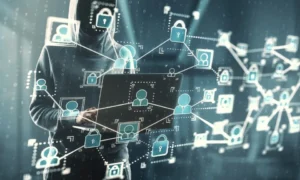Here we go “Beyond Paper Maps” to show you the amazing benefits of digital mapping on our latest adventure in the realm of cartography. A digital revolution has replaced the static and inconvenient paper maps of the past, changing the way we experience and navigate our environments. Come along as we explore the ever-changing world of digital mapping, where instantaneous updates, user input, and a wealth of other features are converging to create a new era of discovery. Discover how this innovative technology transcends the limitations of traditional mapping to put a plethora of geospatial data within reach of consumers and businesses, wherever they may be, on any device, from the palm of their hand to the screen before them. Get ready to be astounded as we show you the unexplored places that digital mapping is prepared to conquer and how it has transcended the restrictions of its paper-based roots. Let’s enter the digital age of mapping, when maps are portals to boundless possibilities rather than static pieces of paper.
The Evolution of Cartography: From Paper to Pixels
Intricate hand-drawn representations on parchment have given way to the dynamic and interactive world of digital mapping as cartography, the art and science of mapmaking, has undergone a tremendous transition over the centuries. Back when maps were still hand-drawn on paper, they were works of beauty that captured the spirit of discovery and travel. With the introduction of digital technology, however, the sector was completely transformed, and maps could finally shed their static limitations and fully embrace the boundless potential of pixels.
The advent of digital mapping with its accompanying accessibility, real-time updates, and interactive features has revolutionised the way we see and get around in the world. Even more interesting breakthroughs are on the horizon as technology develops, promising to further enhance our understanding of the world through the union of art and digital precision in cartography.
Convenience at Your Fingertips: Navigating with Ease
In today’s fast-paced and interconnected world, digital mapping has become the go-to navigational aide, placing information and guidance literally at our fingertips. No longer do travellers have to deal with the hassle of paper maps or getting lost in strange areas thanks to the power of digital maps available on smartphones, tablets, and PCs. Digital maps offer smooth and user-friendly direction whether you’re planning a road trip, checking out a new city, or venturing into the great outdoors. Users are given the ability to easily navigate with the help of search, zoom, and other map features.
In addition, because digital mapping apps make use of real-time data and traffic updates, users may make educated judgements in the moment, allowing them to steer clear of traffic jams and select the most efficient routes possible. Digital mapping technology has made global navigation much simpler and less stressful than ever before.
GPS Empowered: Precision Navigation for the Modern World
GPS (Global Positioning System) is a game-changing technology that has transformed the way we travel because of its pinpoint accuracy and dependability. GPS technology has broken free from the limitations of paper maps, providing pinpoint accuracy in locating destinations and leading users there reliably and without error. Once the domain of the military and the scientific community, this technology is now ubiquitous, found in our smartphones, automobiles, wearables, and other devices. GPS-enabled digital maps let users confidently and easily traverse unknown territory by offering turn-by-turn directions and pinpointing local points of interest. The advent of GPS has altered our conception of time and space, creating a world in which getting lost is a thing of the past and the journey itself is as memorable as the final destination.
Enhancing Emergency Response: Saving Lives with Digital Maps
GIS application development that incorporates digital maps has become an essential lifeline for emergency response teams around the world when every second counts in times of crisis. During times of tragedy, accident, or other emergency, this potent combination allows first responders and aid organisations to rapidly assess the situation, strategize, and act with precision and efficiency. With the help of GIS technology, these groups can superimpose vital data onto digital maps, such as up-to-the-minute statistics on infrastructure, population density, and potential dangers. Thus, rescue workers can more effectively allocate resources, determine safe evacuation routes, and distribute relief to those in need.
GIS (Geographic Information System) application development’s real-time updates and collaborative capabilities promote open communication and coordination across agencies, strengthening their ability to work together in times of crisis. In today’s high-tech world, the combination of GIS and digital mapping has become an indispensable resource for reducing the severity of disasters and saving lives in the aftermath.
Mapping the Uncharted: Remote and Inaccessible Regions Explored
Digital mapping has aggressively explored remote and inaccessible regions in the search for knowledge and discovery. Due to the difficulties of physical exploration, traditional mapping left large parts of our world unmapped. Digital mapping has revealed these isolated locations’ mysteries, challenging our limits. Digital maps cover the entire planet, from rainforests to mountaintops, ocean floors to polar regions. Scientists, conservationists, and explorers can now explore and understand our planet’s most enigmatic regions. We explore undiscovered places and learn about our world’s unique ecosystems through digital mapping. Digital technology helps us learn more, preserve biodiversity, and appreciate nature as we explore the uncharted.
Conclusion
Traditional cartography’s restrictions have been broken by digital mapping, ushering in a new era of exploration and invention. Digital maps have become an indispensable tool in shaping our understanding of the world, allowing us to navigate with ease, aid in emergency response, and explore previously inaccessible regions, all thanks to GPS technology. By using technology, we not only learn more about the world’s geography, but also accept the duty to preserve the planet’s natural wonders and unique species. The “Beyond Paper Maps” project is still developing, and it looks like the future holds even more promise for digital mapping and the role it plays in defining our globalised society. With each new finding and use, digital mapping gives us the ability to pave the way to a better-informed, more sustainable, and more interconnected tomorrow.































